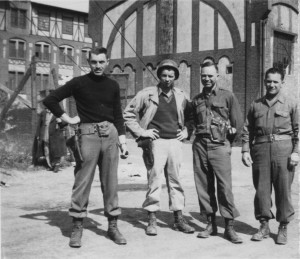As long as art and artifacts have been viewed as precious, beautiful and valuable, there have been people willing to take risks to steal it for themselves or others. In recent years, these robberies are making headlines.
One of the most recent and shocking cases is that of a respected New York City antiquities dealer, Subhash Kapoor, who allegedly raided archaeological sites in Cambodia, Pakistan and India and then used ports of entry to ship the items back to the United States. Of the objects recovered so far, one sandstone sculpture of a woman is said to be worth $15 million.
In January 2014, Darren Agee Merager was sentenced to four years in prison after being convicted of stealing millions of dollars of art from the home of Jeffrey Gundlach, a prominent bond trader. The stolen items, including artwork by Piet Mondrian, Jasper Johns, Joseph Cornell and Richard Diebenkorn, were all eventually recovered.
More often than not, stolen works of art are not recovered. According to the Interpol database, there are over 42,000 art objects listed as stolen with many relating to thefts which occurred during wartime.

Consider the activities that took place in Europe during World War II. According to the Nazi-Era Provenance Internet Portal, a website launched by the American Association of Museums, “From the time it came into power in Germany in 1933 through the end of World War II in 1945, the Nazi regime orchestrated a program of theft, confiscation, coercive transfer, looting, pillage and destruction of objects of art and other cultural property in Europe on a massive and unprecedented scale.”
While some objects were eventually recovered, others have never been found or returned. Following this time, museums around the world continued to collect art and artifacts without fully researching their history. As a result, the original owners of some of the pieces began making ownership claims. Today, museums have begun the long and arduous task of researching pieces in their collections, and in some cases returning them to their rightful owners.
What Can Be Done?
Despite locks, alarms and laws, it is inevitable that art will be stolen. So what can be done to protect items of value?
First, it is important to document fine art. Unlike jewelry which can be melted down and made into something new, artwork is usually not altered because the value of the work is in its original state. Therefore, art is one of the most likely objects recovered.
The object ID checklist is the international standard for describing cultural objects. A checklist should be created for each object and include the following: The maker, the type of object, the title, materials and techniques, measurements, date or period, inscriptions and markings, distinguishing features and subject. A brief paragraph describing the object should be written and clear photographs taken. Once the inventory is complete it should be stored in a safe, locked in a location away from the objects themselves.
This can be a time consuming project and for that reason some serious collectors opt to hire appraisers to collect and document the necessary information. If art has been stolen the theft should be immediately registered with one of the art loss databases such as the Art Loss Register, Interpol, and the National Stolen Art File, which is run by the FBI.
Finally, it is important to mention that, although rare, some insurance companies offer a buy-back provision. If an artwork is stolen and later recovered, this gives the original owner the opportunity to regain title. This can be particularly important if the work of art has gone up in value since the time of the theft. For example, if a painting was stolen when it was worth $50,000 and at the time of recovery it was worth $100,000, the original owner could pay back the insurance company the $50,000 and then retrieve their property now worth the full $100,000.
Recovery of stolen art doesn’t have to be a monumental task.
As many as 350 soldiers eventually enlisted and recovered five million pieces of Nazi-looted artwork, books and documents, according to the Monuments Men Foundation. Many were destroyed and remain lost. These men risked their lives in the name of provenance, stewardship and posterity. While certainly a noble endeavor, fortunately we have the insurance industry to cover our backs.
This article originally appeared in the 2014 spring issue of Claims Journal.
Christian Trabue is a member of the Appraisers Association of America and a review appraiser for Enservio, which offers contents claims software and services. Email: ctrabue@enservio.com.
Was this article valuable?
Here are more articles you may enjoy.

 AI Beats Traditional Weather Models in Forecasting Wildfires
AI Beats Traditional Weather Models in Forecasting Wildfires  ‘Everything Is on the Table’ in NYC Helicopter Probe, NTSB Says
‘Everything Is on the Table’ in NYC Helicopter Probe, NTSB Says  Deutsche Bank’s DWS Pays $27M in German Greenwashing Case
Deutsche Bank’s DWS Pays $27M in German Greenwashing Case  CBS Poised to Lose Bid to Stop Sony Taking ‘Jeopardy’ Rights
CBS Poised to Lose Bid to Stop Sony Taking ‘Jeopardy’ Rights 